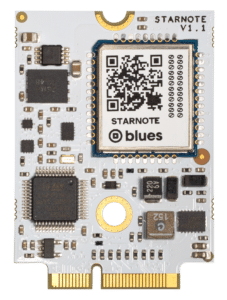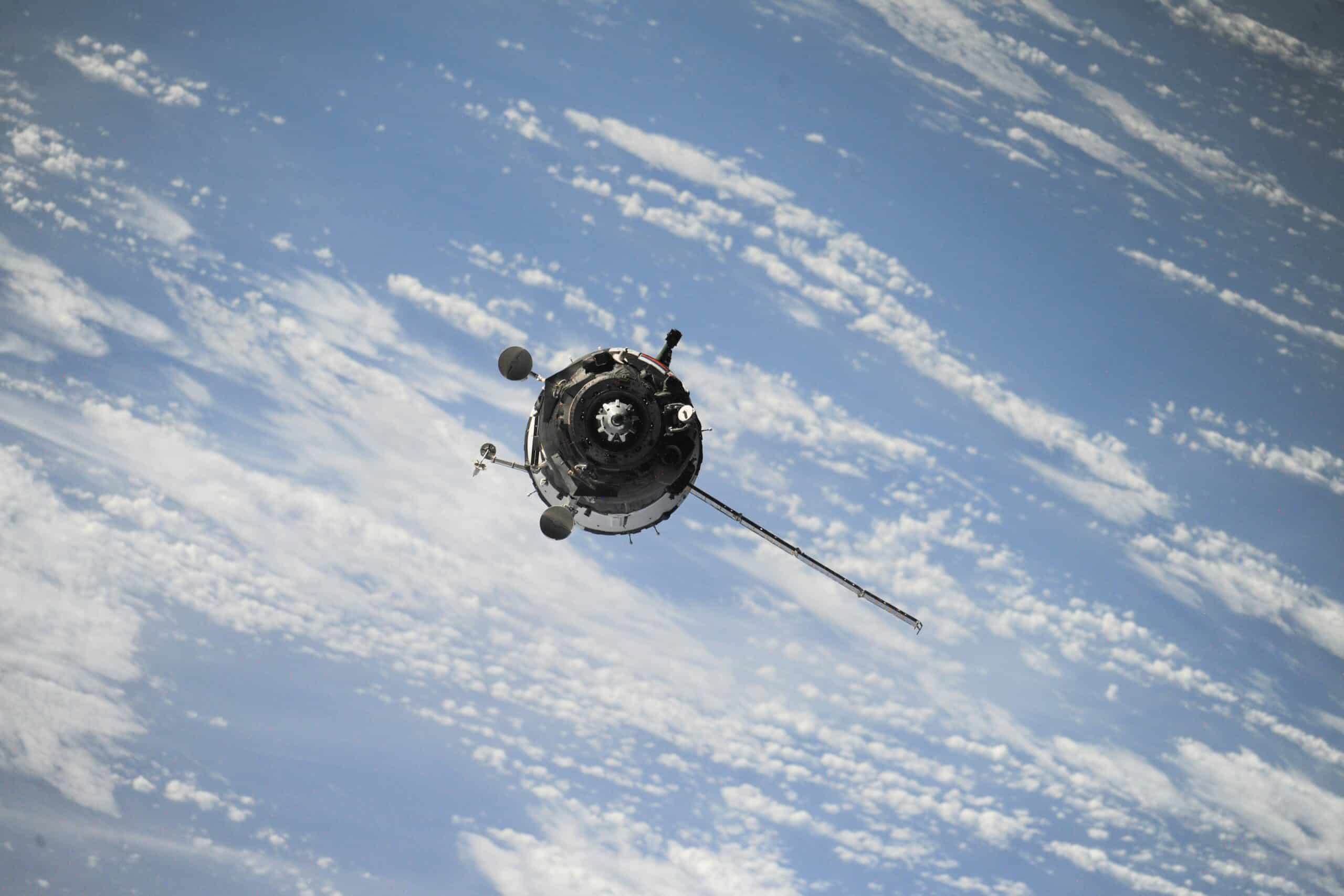The Internet of Things (IoT) is a cornerstone of innovation in an increasingly data-driven world. As pivotal as IoT has become, the space has some significant shortfalls, including heavy reliance on terrestrial networks like Wi-Fi, cellular, and LoRa that only cover a mere 10% of the globe. While these networks enable high-frequency data sampling and reliable connectivity, many connected products operate in and out of coverage or entirely outside the reach of these networks.
To fill these gaps in coverage, developers have increasingly relied on satellite technology, which offers persistent global connectivity. Over time, the cost to launch and maintain a satellite has decreased tremendously, driving a rapid increase in the number of satellites and constellations while putting downward pressure on data costs. This dynamic will only accelerate over time and continue to unlock new previously cost-prohibitive use cases and applications.
In this piece, we’ll examine the current state of the Satellite IoT, explore the obstacles standing in the way of widespread satellite IoT adoption, and explain how Starnote for Skylo’s developer-centric design overcomes these obstacles.
So, strap in and prepare for a journey into the final frontier.
Connecting the Constellations: Understanding the Current State of Satellite Technology
The satellite market is experiencing transformative growth characterized by rapid expansion and technological advancement. According to a recent forecast by ABI Research in early 2023, the revenue from satellite IoT connections is expected to increase from $2.3 billion in 2022 to $9.5 billion by 2030. This equates to a Compound Annual Growth Rate (CAGR) of 19.6%, highlighting the growing demand and potential of satellite connectivity in various industries and applications.
The sheer number of satellites is also exponentially rising. As of late 2023, approximately 6,000 satellites orbit Earth, with around half in Low-Earth Orbit (LEO). Projections indicate a major upswing, with estimates ranging from 20,000 to 58,000 satellites by 2030. The approval of 5G connectivity over non-terrestrial networks (NTN) by 3GPP in 2022 heralds a new era where satellites function akin to “cell towers in space,” enhancing connectivity for various applications.
The satellite market is on the brink of a significant transformation, bolstered by the advent of direct-to-cell services, exemplified by initiatives like Starlink. These services bypass traditional terrestrial telecommunications infrastructure by providing high-speed, low-latency broadband internet directly to end-user devices through compact user terminals. This allows them to offer high-speed satellite connectivity.
While direct-to-cell services hold promise, their impact on IoT remains uncertain. We need more clarity on the overall business model and data fee structure to assess whether or not it is a viable connectivity solution for IoT.
This always-on global connectivity will unlock innovations we cannot yet imagine. More data from aggregated and analyzed sources in the cloud will lead to greater intelligence and more robust modeling and predictions. Companies can finely tune complex systems based on telemetry from components anywhere in the world. Autonomous vehicles across settings from agriculture to transportation will benefit from centimeter-level positioning and instantaneous communication. Mesh networks with intelligent routing will extend far beyond where terrestrial infrastructure reaches today. Emergency response and regional healthcare solutions will save more lives when enabled by satellite IoT systems.
The horizon of satellite IoT is ripe with opportunity, particularly in sectors where remote monitoring and data collection over large or difficult-to-access areas can enable new services and efficiencies. The implications are significant: satellite operators and IoT platform providers are scaling their services, putting downward pressure on data costs while simultaneously improving throughput and accessibility and unlocking new applications.
Monumental Satellite IoT Innovations
Now that we’ve covered the satellite IoT sector as a whole, let’s briefly look at a few incredibly innovative companies whose solutions are paving the way for the next generation of globally connected products:
- Swarm’s Low-Cost Global Connectivity: Swarm introduced the world’s most affordable satellite connectivity for IoT devices, utilizing ultra-compact “grilled-cheese-sized” satellites. This innovation of uniquely small satellites offered connectivity at a fraction of the cost of existing satellite solutions, unlocking new possibilities that were previously financially unviable. In 2021, SpaceX acquired Swarm.
- RockBLOCK’s Versatile Satellite Communication: RockBLOCK offers robust satellite IoT connectivity through the Iridium network. Its compact, low-power design supports global operation, facilitating seamless data transmission from remote locations, which is crucial for developers seeking to integrate satellite communication into diverse applications.
- Lacuna Space’s Revolution in Connectivity: Lacuna has combined ultra-low cost tracking with global, no-blank spot satellite connectivity with seamless integration with terrestrial LoRaWAN networks into a solution capable of operating on battery power for up to 5 years. Ideal for solutions sending low amounts of data, Lacuna has become a leader in asset tracking, smart agriculture, logistics, and more.
- Skylo Enables Seamless Dual Connectivity: Skylo’s technology is built on top of the latest cellular industry standards (3GPP NTN), removing the need for separate satellite modems or antennas, and making satellite connectivity affordable and accessible for all.
Roadblocks to Satellite IoT Adoption
Despite all this innovation and the falling price of satellite data, significant challenges to widespread Satellite IoT adoption remain. Here are some of the most pressing issues connected product developers are facing when looking to add satellite connectivity to their solutions:
- The Politics of Space: One of the most impactful yet challenging obstacles is the politics of connectivity. Achieving global connectivity requires a satellite network provider to work with every country and various international bodies to gain approval to operate within their borders. This is a painstaking process that often leads to patchwork coverage.
- Exorbitant Module Cost: Existing satellite modules are expensive, often costing upwards of $200, driving developers to either forego or downscale deployments.
- High Data Cost: While the cost of satellite data has declined, it is still incredibly high when compared to other RATs. This high-cost forces developers to perform time-consuming byte optimization, leading to a lower data sampling frequency and reduced data payload.
- Active Device Fees: Many major satellite network providers charge a monthly fee per active device, causing service costs to be opaque and unpredictable.
- Integration challenges: The developer experience for satellite solutions is incredibly complex and, for many, inaccessible. The issue is compounded by the fact that few use cases rely solely on satellite connectivity, meaning developers must develop solutions leveraging multiple RATs, manage the complexity of multiple modules with their own distinct firmware requirements, and incur duplicative module costs.
These challenges highlight the need for innovative solutions that offer enterprises cost-effective, transparent, and developer-friendly options.
Industries Primed for Satellite IoT Transformation
Satellite IoT can be used in an almost limitless number of ways, but several industries and use cases will see tremendous benefits by integrating backup satellite connectivity into their devices:
- Marine telematics: Satellite innovations revolutionize marine operations by delivering cost-effective, high-frequency connectivity in near-shore areas and ensuring seamless coverage across open seas. These cutting-edge technologies empower comprehensive resource tracking, facilitate oceanic data collection, and enhance maritime management, thereby driving substantial advancements in logistics efficiency and safety standards.
- Smart agriculture: Satellite connectivity empowers farmers to make informed, data-driven decisions, even in regions with unreliable cellular coverage. Using satellite connectivity, agricultural operations can efficiently optimize crop production, minimize resource consumption, and remotely monitor environmental conditions. This innovative approach enhances yields and promotes sustainability in farming practices.
- Oil and gas: Persistent global connectivity is paramount for offshore rigs and remote wells in the oil and gas sector. Satellite connectivity enables precise asset tracking, real-time predictive maintenance insights, and emergency alerts, bolstering operational efficiency and safety.
- Mining: Maintaining connectivity is essential in isolated mining and construction sites. Satellite connectivity enables global resource monitoring and seamless integration of location data from various sources, ensuring efficient management and safety of heavy equipment.
- Transportation: In the transportation sector, satellite back-up connectivity is essential for tracking vehicles and containers, as well as monitoring the temperature of goods along shipping routes.
With Starnote for Skylo, the ‘Sky’s Just the Beginning

At Blues, we’re meeting these challenges head-on through the launch of Starnote for Skylo, our solution for adding backup satellite connectivity to your Notecard-based product.
Here’s what makes Starnote for Skylo different from other satellite IoT modules:
- Affordable Hardware with Bundled Data: At just $49 with 18kb of bundled data, Starnote is a cost-effective way to add backup satellite connectivity to your Notecard-based solution.
- Native Failover Capability: Deployed in partnership with any Notecard, Starnote offers effortless backup failover satellite connectivity.
- Zero Monthly Active Device Fees: One of the only satellite IoT offerings without a monthly active device fee.
- Fast-Tracked Time to Market: Pre-provisioned satellite connectivity, effortless data routing, low code technology, a straightforward JSON API, and the same unmatched Notecard developer experience reduce your time to market from years to months.
If you’ve been searching for an affordable yet exceptionally capable backup satellite connectivity solution paired with an unmatched developer experience, then your search ends here.

